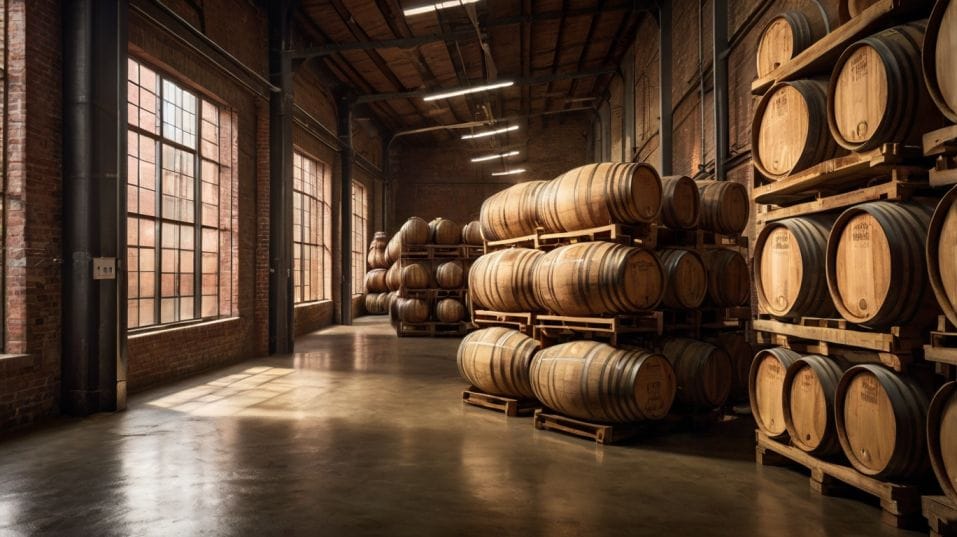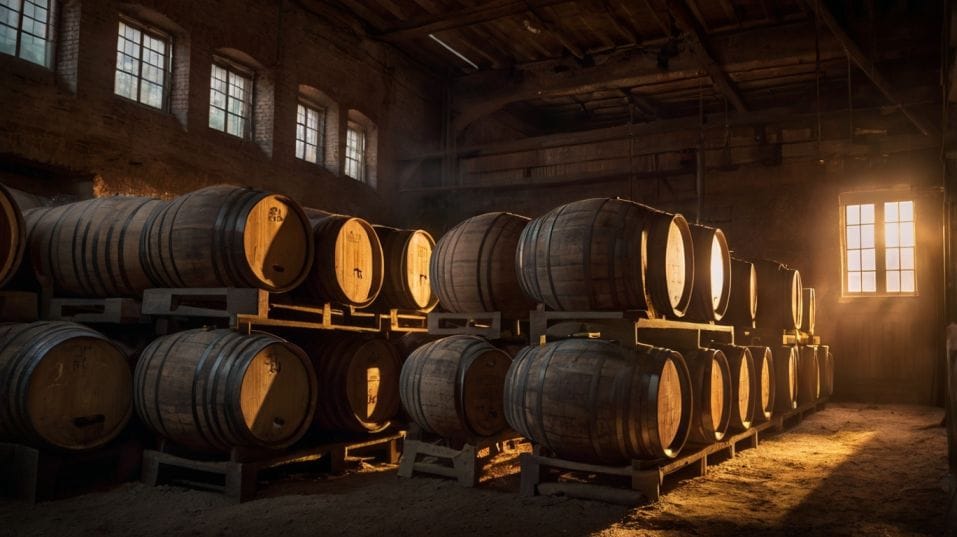What Happens Inside a Barrel Over 10+ Years
Curious about aged whiskey? Learn what really happens inside the barrel over 10+ years—and how time turns spirit into something unforgettable.

What actually happens to whiskey after ten long years in a barrel? If you’re starting to explore aged spirits, it’s time to look past the label. Inside the wood, raw alcohol meets heat, oxygen, and time—and the result isn’t just flavor, but transformation.
This isn’t aging for aging’s sake. It’s chemistry, patience, and risk. Let’s crack open the science and magic behind what really happens during a decade in oak.
Time Isn’t Passive. Neither Is the Barrel.
From day one in the barrel, raw spirit starts changing. It doesn’t sit. It interacts. The inside of that barrel is a chemical pressure cooker powered by heat, cold, wood, and oxygen.
Every degree of temperature, every layer of char, every corner of a rickhouse is influencing what ends up in your glass.
Heat expands the whiskey, pushing it into the barrel’s interior. It seeps into the grain, absorbing flavor compounds like vanillin, lactones, and spice-heavy tannins.
When the temperature drops, the whiskey contracts and pulls those compounds back out, now altered by the wood. This breathing cycle happens over and over for years, creating a slow, layered infusion of flavor.
The char layer, burned into the barrel at the cooperage, isn’t just about color or smoke. It acts like a charcoal filter, smoothing out harsh compounds early in the aging process.
But over time, it also allows deeper extraction from the oak—more complex notes like roasted nuts, dried tobacco, leather, and even hints of earthy mushroom or damp cellar.
Ten years in, you’re not drinking something wood-flavored. You’re tasting a decade-long conversation between the liquid and the barrel.

Oxidation: The Silent Sculptor
Barrels aren’t airtight, and that’s by design. Oxygen slowly enters over time, and while it might sound like a threat to quality, it’s one of aging’s most important tools.
Oxidation breaks down tough, raw alcohols and encourages new compounds to form. It rounds off sharp edges. It builds bridges between flavors.
With a younger whiskey, you’ll taste brightness—fresh fruit, cereal grain, maybe some zippy spice. Over 10+ years, that brightness shifts into richness.
Pear becomes baked apple. Grain becomes warm bread crust. Citrus turns into marmalade or dried orange peel. Even the mouthfeel changes: it gets rounder, more structured, sometimes even syrupy.
This is where you start tasting maturity. Not just flavor depth, but cohesion. A 12- or 15-year whiskey that’s aged well will show harmony—nothing sticking out or fighting for attention. Oxidation helps the whole thing settle into itself.
Evaporation, Climate, and the Angel’s Cut
Here’s where aging gets even more unpredictable. As whiskey ages, it evaporates—both water and alcohol. This is called the angel’s share, and over 10+ years, it can take 30% or more of the barrel’s contents. But what gets lost depends on climate.
In dry climates like Kentucky, water evaporates faster. That means alcohol concentration often goes up over time, making the final product more intense, more robust, sometimes a little hotter on the palate.
In humid climates, alcohol evaporates more quickly, lowering proof and mellowing the whiskey. Both paths can produce greatness—but the conditions matter.
The structure of the warehouse matters too. Barrels high up in a rickhouse face more heat and air circulation, speeding up aging.
Lower floors stay cooler and age slower. A barrel might be 12 years old, but the story it tells can feel older or younger depending on where it sat.
The Barrel: Size, Grain, and Toast
Barrels aren’t one-size-fits-all. Standard American whiskey barrels hold about 53 gallons, but distillers experiment with everything from quarter casks to massive puncheons.
The smaller the barrel, the more surface area the spirit has to interact with, which accelerates aging. But faster doesn’t always mean better.
Tight-grain oak (typically from slow-growing trees) delivers subtler flavors over a longer period. It gives whiskey elegance, softness, and fine detail.
Loose-grain oak, often from faster-growing trees, gives up its flavors quickly and can dominate the spirit if not managed carefully.
Toast level adds another layer. Before a barrel is charred, it might be toasted—gently heated to coax out sweet, nutty, or spicy compounds.
Long-toast, light-char barrels tend to give a softer profile; heavy-char barrels punch harder, with more smoke and grip.
Age Isn’t a Trophy. It’s a Risk.
Here’s the hard truth: not all whiskey gets better with time. Some fall apart. Ten-plus years in a barrel is a gamble.
If the base spirit doesn’t have the strength to evolve, it might dry out, turn bitter, or lose all finesse. Too much oak can strangle a whiskey.
That’s why age alone doesn’t guarantee greatness. A well-made 6-year bourbon can outshine a flat, over-oaked 15-year.
But when long aging works, it delivers something you can’t fake: depth. Layers that unfold slowly. A finish that lingers with clarity and grip.
The key is to train your palate. Taste side-by-sides. Look for how the wood shows up—as balance, as bitterness, or as bold spice. Learn what long aging brings, so when you do find a 10+ year whiskey that sings, you know why it matters.
Final Thoughts
A decade in a barrel isn’t about prestige. It’s about transformation. It’s about how raw spirit turns into something layered, confident, and unforgettable.
When you understand what happens over those years—the way flavor builds, softens, or stretches—you stop chasing age blindly and start collecting with intention.
So pour something that’s earned its time. Study it. Let it teach you what patience can taste like. Then take that insight into your next bottle.
Build a collection that speaks to flavor, not just numbers. And keep your curiosity sharp—because the barrel never stops working, and neither should you.




